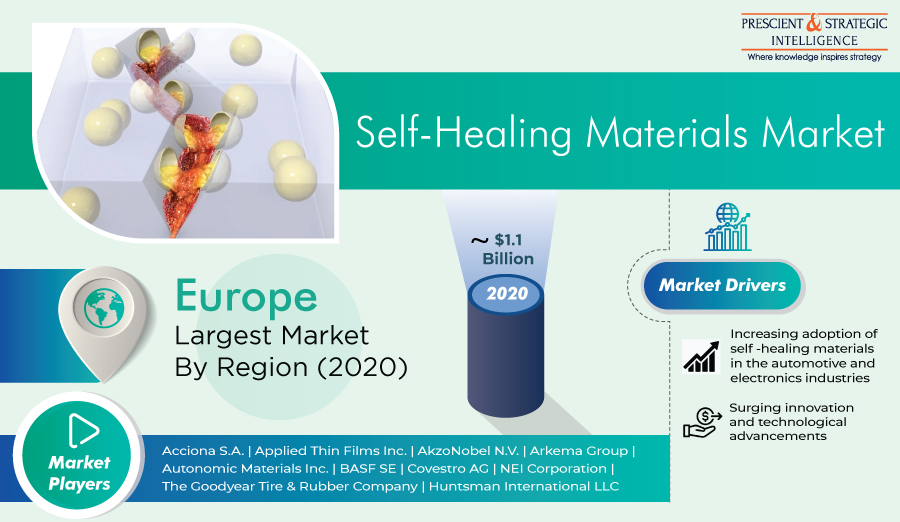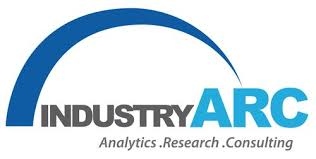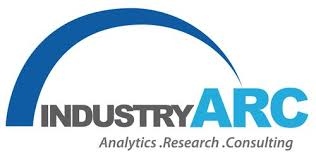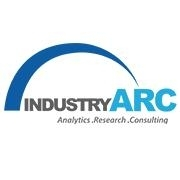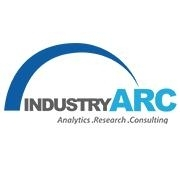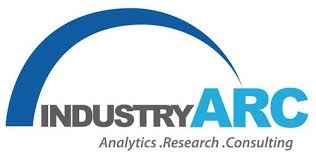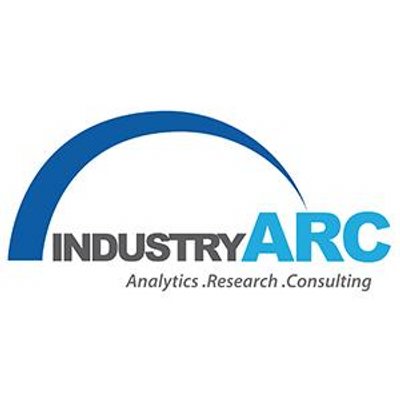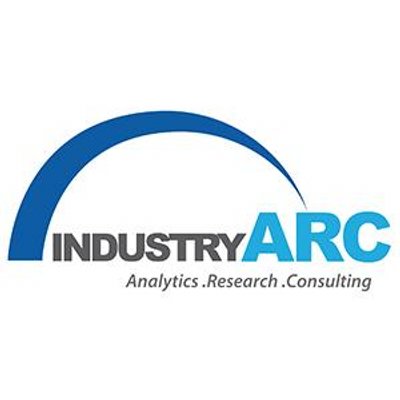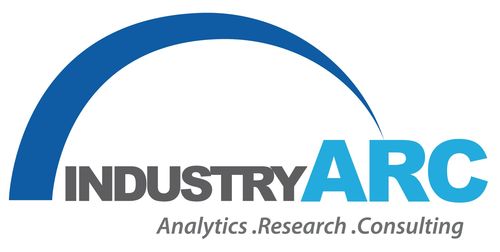
“In Mould Labelling Market”
Growing demand for the healthcare industry will also act as a driver for the growth of the in mould labelling market during the forecast period.
In mould labelling market size is forecast to reach US$2.9 billion by 2026, after growing at a CAGR of 5% during 2021-2026 owing to rising demand from various end-use industries such as consumer goods, home, and personal care, food and beverage, and electronics and electrical industry. Materials such as polypropylene, polypropylene, polyvinyl alcohol, and polyvinyl Chloride are widely used in in-mould labels to improve their tear-resistant capacity which makes packaging last for a long time. The rapid growth of labels for giving a colorful decorative look to the product is contributing to the growth of in mould labelling industry. In mould labelling industry is constantly working on improving technology to reduce the cost of high-quality printing even at a low volume of labels, which has resulted in the growing demand for digital printing technology. All these factors are driving the growth of in mould labelling market and are anticipated to drive the growth during the forecast period.
COVID-19 Impact
The in mould labelling market was affected by the COVID-19 pandemic in 2020, due to the strict government restrictions. The government restrictions enforced the closure of non-essential activities, owing to which there was a supply disruption of raw materials. Also, the automobiles industry saw a decline in production and faced huge losses at the global level. For instance, according to the Organisation Internationale des Constructeurs d’Automobiles (OICA), in the year 2019, the global production of passenger cars were 6,71,63,769 units and it declined in the year 2020, to 5,58,34,456 there was a decline was -16.9% compared with the year 2019, which resulted in a decline in demand in mould labelling industry. However, in 2021 due to the proactiveness of the countries production of manufacturing goods started again with reduced labor or with automation. As a result, the in mould labelling market was not as adversely affected as it was affected in 2020. It is forecasted that by mid-2022 the effect of COVID-19 will be curbed out and this would lead the market situation back to normalcy as it was before the COVID-19 pandemic.
In Mould Labelling Market Segment Analysis – By Material
The polypropylene segment held the largest share in the in mould labelling market in 2020. Polypropylene is widely used as a material in in-mould labelling because its additional polymer thermoplastic serves multiple benefits for in-mould labelling such as it increases durability, longevity, and resistance. Because of its moisture resistance capacity, it is widely used across the industries and specifically in the healthcare sector where label serves huge importance. Apart from this bottles and containers that are manufactured using polypropylene material can be recycled without removing the labels. As per the International Waste Shipment Amendment 2019, a mixture of polypropylene (PP), polyethylene (PE), and polyethylene terephthalate (PET) can continue to export under Green List controls on the proviso that they will be recycled separately. Due to these benefits, the use of polypropylene material has increased in the in mould labelling market.
In Mould Labelling Market Segment Analysis – By Technology
The injection moulding segment held the largest share in the in mould labelling market in 2020. Injection moulding technology helps in fast production with higher efficiency as a result of this the per hour production of in mould label increases. It gives a 3D effect to the labels, this helps in creating an appealing decorative label for the product. Apart from this injection moulding technology is cost-effective in comparison with other technology because it has low labor cost, high-output production, and low scrap rate. Due to these advantages, there has been a growing demand for injection moulding technology in in-mould labelling industry.
Request for Sample Report @ https://www.industryarc.com/pdfdownload.php?id=15897
Report Price: $ 4500 (Single User License)
In Mould Labelling Market Segment Analysis – By Printing Technology
The flexographic printing segment held the largest share in the in mould labelling market in 2020. It can be used on porous and nonporous surfaces which makes it easier to mold various kinds of polymers. It is widely used in food packaging labels. Food and beverages are the dominating categories of in mould labelling where flexographic printing is used. Because flexographic printing is quick-drying and uses non-toxic ink which makes the food safe. As a result of all these factors, there has been a surge in the demand for flexographic printing in in-mould labelling industry and is expected to grow in the future projected period also.
In Mould Labelling Market Segment Analysis – By Printing
InkThe UV curable ink segment held the largest share in the in mould labelling market in 2020. As the in mould labelling process is carried out under high temperatures. Conventional inks can’t be used in in-mould labelling because they have inadequate heat and chemical resistance and as a result of this during the process, they get washed away. UV curable ink has chemical and abrasion-resistant properties due to this it is widely used. Also in comparison with other inks, it is cost-effective the ink isn’t absorbed by the material as a result of this there’s no smudging and no additional costly coating is required. Due to these factors UV curable inks demand is growing in the in mould labelling market.
In Mould Labelling Market Segment Analysis – By Application
The label segment held the largest share in the in mould labelling market in 2020 and is growing at a CAGR of 6% during 2021-2026. The label serves as an integral part of the final product. With the use of mould, labels become heat resistant and durable it results in increased longevity of the labels. For food and beverages, healthcare, personal care, and other such industries it becomes necessary to display the content of the product on the labels. And the regulations are changing from time to time. For instance, in 2019 the U.S Food and Drugs Administration announced changes to the nutrition facts label. These changes in mould labelling become cost-effective measures in comparison with other packaging options. Thus growing demand for the label industry will drive the in mould labelling market.
In Mould Labelling Market Segment Analysis – By End-Use Industry
The food and beverage segment held the largest share in the in mould labelling market in 2020 and is growing at a CAGR of 6.8% during 2021-2026. In mould labelling is widely used in the food and beverages sector because it helps in increasing the durability of the packaging of the product. The containers manufactured from in mould labelling can bear very low temperatures thus they are ideal for containers of yogurt, ice cream, cheese, butter, and other such frozen containers. The disposable income of the people is increasing and at the global level there has been growth in the population as a result of this there has been a growth in the demand for food. Also, there has been an increase in the exports of food and beverages. According to, Food and Drink Federation of UK (FDF), in 2019 food and drink export increased by 4.3% reaching a total of approximately US$28 billion. As a result of these factors, there has been an increased demand for in mould labelling in the food and beverage industry.
In Mould LabellingMarket Segment Analysis – By Geography
The Europe region held the largest share in the in mould labelling market in 2020 up to 42%. The growing demand for food and beverage, home and personal care products, consumer goods, and healthcare are the reason for Europe’s dominance in in-mould labelling market. The per capita income of the citizens is growing which has resulted in the growing demand for consumer goods resulting in the growth of in mould labelling. Europe’s food and beverages industry exports growing at a consistent rate. For instance, according to Food Drink Europe (FDE), the exports of food and beverages of Europe stood at US$44 billion in the 4th quarter of 2018 and in the 4th quarter of 2019 it was US$46 billion, which saw an increase of 2% growth. The growth of Europe’s cosmetic sector is also driving the in mould labelling market. According to Cosmetics Europe, the Personal Care Association, in 2019 Europe was the largest cosmetic market at a global level with a value of US$94 billion. Due to these benefits the in mould labelling market is been growing exponentially in the European region.
Direct Purchase @ https://www.industryarc.com/purchasereport.php?id=15897
In Mould Labelling Market DriversRapid Development in the Healthcare Industry
In mould labelling is very much important for the healthcare sector. It provides resistance towards moisture and any other change which may damage the packaging of medicines and medical equipment. At the global level, there has been an increase in the demand for vaccines. According to World Health Organization (WHO), at the global level demand for vaccination was 3.5 billion with a global market value of US$26 billion in the year 2018, and in the year 2019 the global demand stood at 5.5 billion with an increase of 57% compared to 2018 moreover, the global market value stood at US$33 billion with an increase of 26% compared to 2018. Moreover, there has been an increase in the demand for healthcare equipment. According to Invest India, India’s medical device is industry is will reach US$50 billion with a CAGR of 37% by 2025. The growing demand for the healthcare industry will also act as a driver for the growth of the in mould labelling market during the forecast period.
Growth of electronic and electrical products industry
There has been considerable growth in the electronic and electrical products industry wherein mould labelling is used to give the product a colorful esthetic feel. The smartphone industry is growing exponentially. According to Global System for Mobile Communication, by the year 2025, there will be some new 700 million new mobile subscribers. The sales of electronic and electrical goods are rising and this is leading towards the growth of in mould labelling market. Moreover, there has been an increase in the production of consumer electronic equipment, especially in the Asia-Pacific region. For instance according to, Japan Electronics and Information Technology Industries Association (JEITA), in December 2019 the production of consumer electronic equipment was at US$356 million and in December 2020 it increased to US$380 million with an increase of 6.8% compared to the year 2019. The growing demand for the electronic and electrical industry will also act as a driver for the growth of the in mould labelling market during the forecast period.
In Mould Labelling Market Challenges
Environmental Issues
The major challenge hindering the growth of in mould labelling industry is the use of plastic in the labels and its disposable concerns. The mass production and non-recycling of plastic add an increase in plastic landfills. According to UN Environments, only 9% of the plastic is been recycles rest lies in the landfills, dumps, and natural environment. Moreover, there are restrictions on the processing of containment plastics. For instance, as per the International Waste Shipment Amendment 2019, only plastics destined for the recycling operations, and which consist of only one type of plastic and are almost free from pollution, can be exported under ‘Green Book’ waste. All these factors are adding to the challenges for the in-mold labelling market.
In Mould LabellingMarket Landscape
Technology launches, acquisitions, and increased R&D activities are key strategies adopted by players in the in mould labelling market. Major players of the in mould labelling market include:
CCL Industries Inc.
Constantia Flexibles Group GMBH
Huhtamaki Group
Coveris Holding S.A.
Cenveo, Inc.
Fuji Seal International, Inc.
Multicolor Corporation
EVCO Plastics
Inland Label & Marketing Services, LLC
Innovia Films Ltd.
Acquisitions/Technology Launches
In July 2021, Multi-Colour Corporation acquired Hexagon. This acquisition was undertaken in order to fulfill the high demand for in mould labelling.
Key Takeaways
Europe region dominates the in mould labelling market, owing to the wide usage of in mould labelling in the food and beverages industry. According to, Food and Drink Federation of UK (FDF), the total manufacturing in the year 2018, for food and drinks, was US$33 billion it increased by 3.6% in 2019 and stood at US$34.2 billion.
The growth of the pharmaceutical industry is impacting the growth of the in mould labelling market as it is used in the packaging of medicines. For instance, according to Invest India, the pharmaceutical industry of India will reach US$65 billion by 2024.
As the demand for the personal care industry is growing, it is leading the growth of in mould labelling industry because it helps in enhancing the decoration on labels.
Moreover, due to its qualities of durability and heat resistance, it is widely used in the food and beverages industry.
In mould labelling use is increasing in the chemicals industry to make the product packaging more durable and also these products require packaging which has resistance towards heat and ultimately it is leading the growth of in mould labelling industry.
Relevant Reports
Private Label Food and Beverage Market
https://www.industryarc.com/Report/17777/private-label-food-beverage-market.html
For more Chemicals and Materials related reports, please click here
About IndustryARC: IndustryARC primarily focuses on Cutting Edge Technologies and Newer Applications market research. Our Custom Research Services are designed to provide insights on the constant flux in the global supply-demand gap of markets. Our strong team of analysts enables us to meet the client research needs at a rapid speed, with a variety of options for your business. Any other custom requirements can be discussed with our team, drop an e-mail to sales@industryarc.com to discuss more about our consulting services.
Media Contact
Company Name: IndustryARC
Contact Person: Mr. Venkat Reddy
Email: Send Email
Phone: (+1) 970-236-3677
Address:Madhapur
City: Hyderabad
Country: India
Website: https://www.industryarc.com/
Press Release Distributed by ABNewswire.com
To view the original version on ABNewswire visit: In Mould Labelling Market to Grow at a CAGR of 5% During 2021-2026

